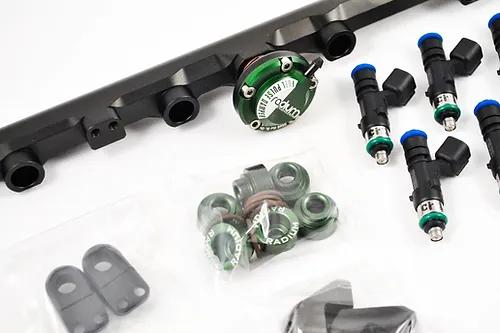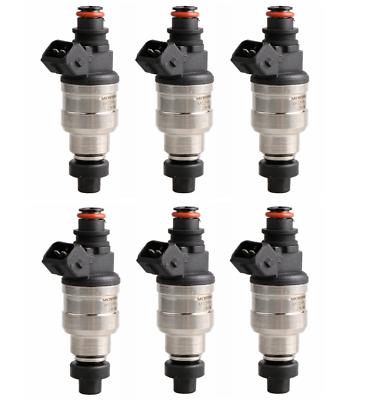The fuel injection system is a critical component in modern engines, ensuring the precise delivery of fuel for optimal combustion and performance. For 2JZ engine enthusiasts, maintaining a well-functioning fuel injection system is essential to achieving peak engine performance and efficiency. Accurate diagnostics of the fuel injection system can help identify issues early, preventing costly repairs and maintaining the longevity of the engine.
In this comprehensive guide, we will explore the importance of fuel injection system diagnostics, delve into common issues and their causes, and provide a detailed step-by-step approach to diagnosing and resolving these problems. By understanding and implementing these diagnostics, you can ensure your 2JZ engine remains in top condition.
Understanding the Fuel Injection System
The fuel injection system in the 2JZ engine is designed to deliver the right amount of fuel to the engine cylinders at the correct time, ensuring efficient combustion. This system replaces the older carburetor system, offering improved fuel efficiency, better throttle response, and reduced emissions.
Components of the Fuel Injection System in the 2JZ Engine:
- Fuel Injectors: Spray fuel into the engine cylinders.
- Fuel Pump: Delivers fuel from the tank to the injectors.
- Fuel Pressure Regulator: Maintains consistent fuel pressure.
- Fuel Rail: Distributes fuel to the injectors.
- Engine Control Module (ECM): Manages the timing and amount of fuel injected based on sensor inputs.
- Sensors: Include the oxygen sensor, mass air flow sensor, and throttle position sensor, which provide data to the ECM.

Importance of Accurate Diagnostics:
- Ensures optimal engine performance and fuel efficiency.
- Prevents engine damage and costly repairs.
- Helps in maintaining low emissions and compliance with environmental regulations.
Understanding the components and functions of the fuel injection system is crucial for accurate diagnostics and effective maintenance.
Common Fuel Injection System Issues
Fuel injection system issues can manifest in various ways, affecting engine performance and drivability. Recognizing the symptoms and understanding their causes can help in diagnosing and resolving these problems effectively.
Symptoms of Fuel Injection System Problems:
- Rough Idling: Engine runs unevenly or stalls at idle.
- Poor Acceleration: Lack of power and slow response when accelerating.
- Increased Fuel Consumption: Noticeable drop in fuel efficiency.
- Engine Misfires: Irregular firing of the engine cylinders.
- Check Engine Light: Illuminates due to diagnostic trouble codes (DTCs) related to the fuel system.
Common Causes of Issues in the Fuel Injection System:
- Clogged Fuel Injectors: Dirt and debris can clog injectors, reducing fuel flow.
- Faulty Fuel Pump: Inadequate fuel delivery can cause performance issues.
- Fuel Pressure Regulator Malfunction: Inconsistent fuel pressure affects injector performance.
- Sensor Failures: Faulty sensors provide incorrect data to the ECM, affecting fuel injection timing and amount.
- Electrical Issues: Wiring problems or faulty connections can disrupt the fuel injection system’s operation.
Impact on Engine Performance:
- Reduced Power: Inadequate fuel delivery leads to poor combustion and reduced engine power.
- Engine Stalling: Irregular fuel supply can cause the engine to stall unexpectedly.
- Increased Emissions: Improper fuel combustion results in higher emissions, failing emission tests.
By understanding these common issues and their impacts, you can effectively diagnose and address fuel injection system problems.
Diagnostic Procedures for the Fuel Injection System
Accurate diagnostics of the fuel injection system involve a systematic approach, using specific tools and techniques to identify and resolve issues. Here is a step-by-step guide to diagnosing fuel injection system problems in the 2JZ engine.
Tools Required:
- Fuel Pressure Gauge: Measures fuel pressure in the system.
- Multimeter: Tests electrical components and wiring.
- OBD-II Scanner: Reads diagnostic trouble codes (DTCs) from the ECM.
- Service Manual: Provides specific diagnostic steps and specifications.
Step-by-Step Guide:
- Preparation:
- Ensure the engine is off and the key is removed from the ignition.
- Gather all necessary tools, including the fuel pressure gauge, multimeter, and OBD-II scanner.
- Checking Fuel Pressure:
- Connect the fuel pressure gauge to the fuel rail.
- Turn the ignition key to the “ON” position without starting the engine.
- Observe the fuel pressure reading and compare it with the specifications in the service manual.
- If the pressure is outside the specified range, inspect the fuel pump and pressure regulator.
- Inspecting Fuel Injectors:
- Use a multimeter to check the resistance of each fuel injector.
- Refer to the service manual for the correct resistance values.
- If any injector is outside the specified range, consider cleaning or replacing it.
- Reading Diagnostic Trouble Codes (DTCs):
- Connect the OBD-II scanner to the vehicle’s diagnostic port.
- Read and record any DTCs related to the fuel injection system.
- Refer to the service manual for specific diagnostic steps based on the DTCs.
- Testing Electrical Components:
- Use the multimeter to test the continuity and voltage of electrical components and wiring.
- Check for any loose connections, damaged wires, or faulty sensors.
- Performing Visual Inspections:
- Inspect the fuel lines, fuel rail, and connectors for any signs of damage or leaks.
- Ensure all components are securely connected and free from debris.
Interpreting Diagnostic Results:
- Normal Readings: Indicate the component or system is functioning correctly.
- Abnormal Readings: Suggest an issue that needs to be addressed, such as a faulty injector, fuel pump, or sensor.
By following these diagnostic procedures, you can accurately identify and resolve fuel injection system problems, ensuring your 2JZ engine performs optimally.
Conclusion
In summary, fuel injection system diagnostics are essential for maintaining the performance and reliability of your 2JZ engine. By understanding the components, common issues, and diagnostic procedures, you can effectively address any problems and ensure your engine runs smoothly.
If you suspect any issues with your fuel injection system, perform a detailed diagnostic using the steps outlined in this guide. Regular maintenance and timely repairs will help maintain the performance and longevity of your 2JZ engine.
Frequently Asked Questions (FAQ)
What are the symptoms of a faulty fuel injection system?
Common symptoms include rough idling, poor acceleration, increased fuel consumption, engine misfires, and the check engine light illuminating.
How can I diagnose fuel injection system problems?
Use tools such as a fuel pressure gauge, multimeter, and OBD-II scanner to check fuel pressure, inspect fuel injectors, read DTCs, and test electrical components.
What tools do I need for fuel injection system diagnostics?
You will need a fuel pressure gauge, multimeter, OBD-II scanner, and the service manual.
Can I drive with fuel injection system issues?
It is not recommended to drive with unresolved fuel injection system issues, as they can lead to further engine damage and reduced performance.
How often should I check my fuel injection system?
Regular diagnostics should be performed during routine maintenance, such as every oil change or every 10,000 miles, to catch issues early and maintain engine health.
